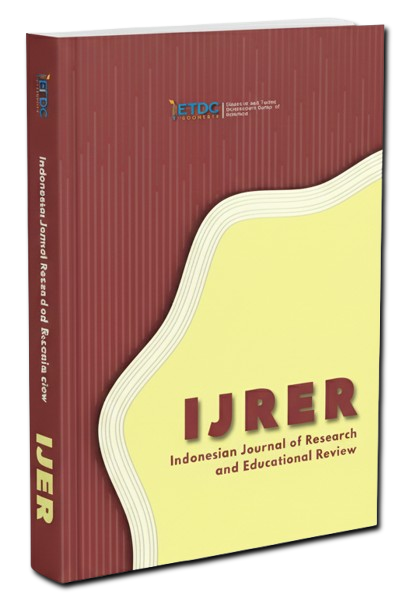Impact of E-Leadership on Service Delivery in Kenya: A Case of Public Universities
DOI:
https://doi.org/10.51574/ijrer.v3i2.1139Keywords:
E-leadership, Service Delivery, Public UniversitiesAbstract
Electronic leadership is basically becoming a norm in contemporary organizations. Despite the effectiveness and efficiency attached to e-leadership, its extent of adoption seems to be at the infancy stage in most of Kenyan Organizations. The purpose of this paper was to assess the impact of e-leadership on Service delivery in Kenya’s Public Universities. The objectives of the study were: to establish the level of adoption of e-leadership in Kenya’s Public Universities, to establish the impact of e-leadership on communication in the public universities and to establish effects of e-leadership on service delivery in Kenya’s Public Universities. The study adopted a Meta-analysis of empirical literature on the topic. The study was underpinned by Technology Acceptance Model by Davis (1989). The study established variability in the level of embracement of e-leadership amongst the universities, that there was a strong positive relationship between e-leadership and service delivery, that e-leadership enhances faster and effective communication. The study findings have implications on the corporations’ need to embrace e-leadership for their effectiveness.
References
Awuor, E., & G.L. (2014). E-learning in Public Institutions in Kenya: Implementation Challenges. Journal of Information Engineering and Applications 4(4),154-166
Banerjee, P., &Chau, Y.K.P. (2004). Qualification Framework for analyzing e-government convergence capability in developing nations
Bansal, M, &Singh (2005). From leadership: a paradigm shift. Indian Journal of Industrial Relations 40(3),394-409
Behtski, M, & Liversage, B. (2019). E-Leadership in Small and Medium Enterprises on developing World. Technology, Innovation and Management Review,9(1): 64-74
China, P.Y., &Chau, P.Y. (2017). How are e-leadership practiced in implementing a school virtual learning environment centered? A grounded Model Study. Computers and Education 109(2),109-121
Clark, J.M. (2018). E-Leadership through strategic alignment: An Empirical Study of SMEs in the Digital Age. Journal of Information Technology 3(1): 19-28
Chondo, M.M. (2021). Digital Transformation Occasioned by Covid-19 and Service Delivery Among Public Universities in Nairobi County. E-Learning Digital Media 12(1),80-92
Ferrer, R. L (1998). Graphical methods for detecting bias in Meta-analysis. Family Medicine-Kansas City 30 (2), 579-583.
Feshchenko, P., Noponen, N., Vilma, L.A., Auvinen, T. (2023). Digital Corporate Communication and Algorithmic Leadership. A handbook on Digital Corporate Communication 311-325
Ibrahim, M.Y., Yaakob, M.F.M., &Yusof, R. (2018). The effect of e-leadership and team communication on well-being of school leaders in Malysia.International Journal of Civil Engineering 9(7),994-999
Iraqat, R.A.M., &Khalafi, D.M.S. (2018). Does building Trust enhance the effect of e-leadership on organizational commitment: Empirical Evidence from the Islamic Banks in Palestine.
Jameson. (2013). E-Leadership in Higher Education: The Fifth Technology of Educational Research. Journal of Educational Technology 44(6),889-915.
Jane, N. (2020). Digitization Readiness Assessment in Public Organizations’ Case of Kenya National Examination Council (KNEC)
Kashive, N., Khana, V.T., &Powale, L. (2022). Limpese, A.H. (2018). Integration Information Communication and Technology (ICT) in Enabling E-leadership in Public Secondary Schools in Busia County, Kenya. Unpublished Master of Management, Kibabii University
Lankisa, S.M. (2022). The role of e-leadership in Employee Productivity: A Case of University of Nairobi
Mutisya, D.N., &Makokha, G.L. (2016). Challenges affecting adoption of e-learning in Public universities in Kenya. E-Learning Digital Media 13(3-4),140-157
Mwirigi, B.K. (2018) Influence of leadership orchestrated on Electronic Readiness Accession in Higher Educational Institutions in Kenya
Gati, M.S., & Namusonge, M. (2019). Strategic Innovation and Service Delivery in Public Universities: A Case of Public University. Journal of Current Aspects 3(3),199-211
Neerja, K., Khanna, V.T., &Powale, L. (2020). Virtual Team Performance: E-Leadership roles in the era of COVID-19. ASEAN.Jurnal Kebijakan Dan Administrasi Publik (JKAP) 10(2):11-23
Nang’unda, K.A. (2018). Assessment of Principals’ leadership in ICT Integration in Public Secondary Schools in Bungoma County, Kenya
Ngugi, P.W. (2022). Determinants of E-Government: A Case of Nakuru Town Huduma Center
Njogu, M.W. (2003). A survey of extent of ICT adoption in a state Corporation in Kenya. Unpublished Master of Business Administration Thesis, Machakos University
Riany, G.K., &Were, S., Kihara, A.N. (2020) on influence of electronic services on Public Service Delivery by State Agencies Kenya
Sinclar, P. (2014). E-leadership in cross-cultural Education delivery. European conference management Leadership and Governance,5(1):322-329
Sunarsi, D., Rohaeni, N., Wulansari, R., Andnani, J., Muslimat, A., Rialmi, Z., Kustini, E., Krishanti, D.E., Effendy, A.A., Purwanto, A., &Falheri, M. (2020). Effects of e-leadership style on organizational commitment
Tarus, JK, Gichoya, D.&Muumbo, A. (2015). Challenges of implementing e-learning in Kenya: A Case of Kenyan Public Universities
Wariuko, W.J., Nyonje, R., &Omolo, O.P.E. (2018). Human Resource Capacity and Adoption of E-Government for improved service delivery in Kajiado County Government, Kenya. International Journal of Business and Social Science 9(10),94-110














1.png)













